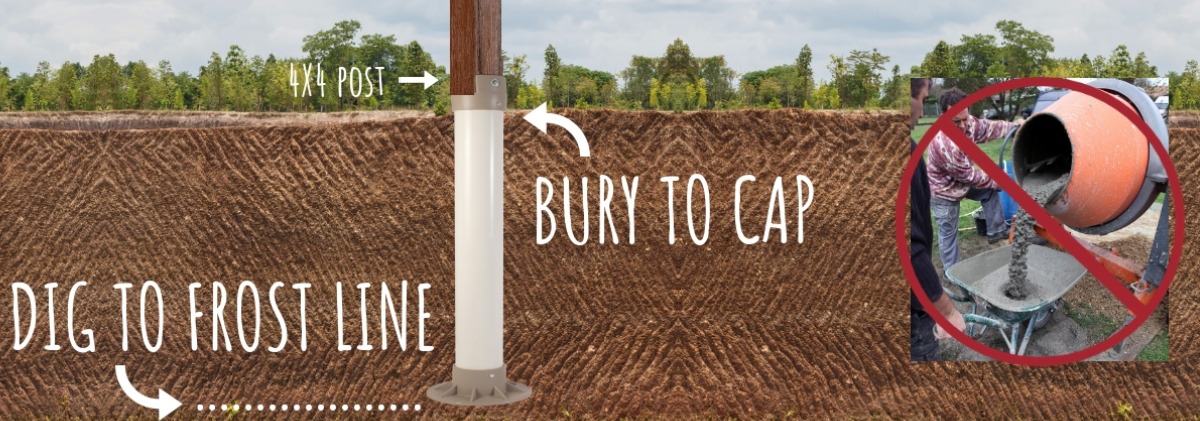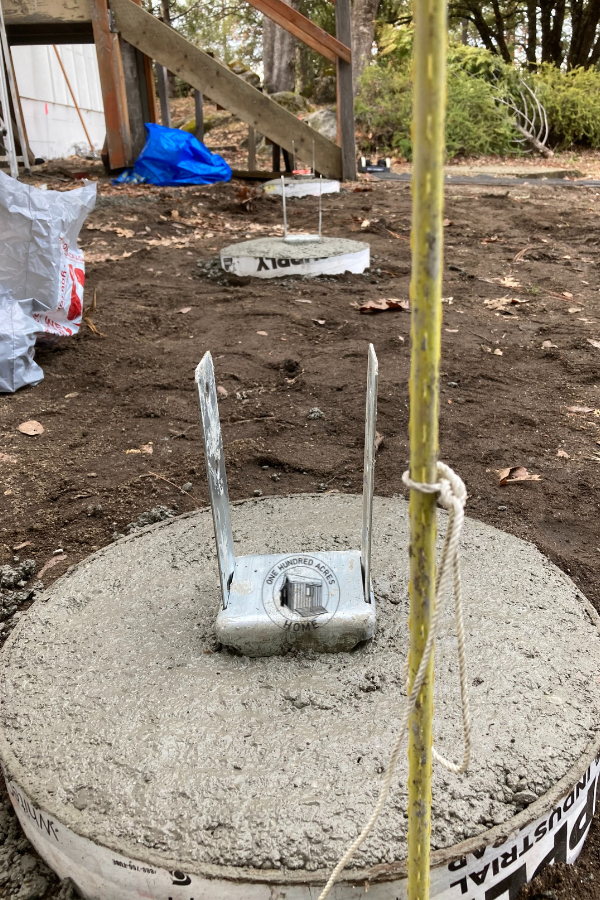Engineered for Success: The Scientific Research Behind Robust and Resilient Deck Footings
Wiki Article
Picking the Right Deck Footings for Stability and Toughness
When it pertains to constructing a deck, among one of the most critical choices you will certainly make is selecting the right grounds for security and resilience. The long life and security of your deck depend heavily on the kind of grounds you choose, as they provide the necessary assistance and stability to hold up against the test of time. With a myriad of choices offered, it can be frustrating to determine which grounds are best fit for your certain requirements. In this conversation, we will certainly check out the various sorts of deck footings, think about the essential variables to evaluate when making a decision, and dig into the advantages and disadvantages of various alternatives. By the end, you will have a clearer understanding of the choices available and be better furnished to make a notified choice for your deck project.Kinds Of Deck Grounds
There are several sorts of deck footings that can be made use of, each offering unique benefits and considerations. One usual sort of ground is the concrete pier footing. These grounds contain a cylindrical opening loaded with concrete, which supplies a solid structure for the deck articles. Concrete pier footings are relatively easy to install and provide exceptional security, making them a popular selection for many deck tasks.These footings are installed by screwing them right into the ground, which creates a protected structure for the deck. They also enable for easy adjustment and leveling of the deck if required.
Conversely, some home builders choose precast concrete grounds. These grounds are made of durable concrete and can be found in various sizes and shapes to suit different deck layouts. Precast concrete grounds are convenient to install and supply a stable base for the deck framework.
Ultimately, an additional choice is the post-in-anchor ground system. This kind of footing involves driving a metal support into the ground and connecting it to the deck article. It supplies adaptability in terms of placing the deck posts and appropriates for decks with light-weight frameworks.
When picking the best type of deck footing, it is vital to think about elements such as soil problems, deck load, and neighborhood building ordinance (Deck Footings). Consulting with an expert specialist or structural engineer can help make certain the appropriate footing is selected for a secure and secure deck
Elements to Take Into Consideration When Selecting Grounds
When selecting the suitable footings for a deck, it is vital to meticulously take into consideration various aspects such as dirt problems, deck lots, and adherence to neighborhood building codes. These aspects play a considerable function in guaranteeing the stability and durability of the deck structure.The kind of soil on which the deck will certainly be developed identifies the type of footings called for. On the other hand, decks developed on clay or extensive soils may call for footings that can fit the soil's propensity to increase and contract.
An additional vital variable is the deck load. The weight of the deck, including the materials utilized and any potential online lots such as furniture or celebrations, have to be thought about when picking footings. The grounds should be created to bear the weight of the deck and disperse it evenly to stop any structural problems or failures.
Last but not least, adherence to regional building ordinance is extremely important. Building codes vary from region to region, and it is necessary to adhere to the certain requirements set by the local authorities. Deck Footings. These codes ensure that the deck is developed securely and meets the necessary requirements for architectural honesty and load-bearing ability
Concrete Grounds: Cons and pros

Concrete grounds supply numerous benefits and drawbacks when used as the structure for a deck. On the positive side, concrete footings give exceptional stability and longevity.
Another advantage of concrete grounds is their convenience. They can be put into different sizes and shapes to suit different deck styles and setups. Concrete grounds can be customized to fit the certain needs and demands of the deck structure.
Nevertheless, there are also some drawbacks to utilizing concrete footings. This can increase the total expense of the deck job and may require professional aid.

Helical Piers Vs. Sonotubes: Which Is Much better?
In considering the structure choices for a deck, the comparison between helical piers and sonotubes is critical in establishing the superior option. They are twisted into the ground using hydraulic equipment, offering a secure and sturdy structure for the deck.When it comes to stability and durability, helical piers have the top hand. The helical plates on the piers develop a strong grasp with the soil, shifting Bonuses or preventing any kind of movement of the deck. This is especially valuable in locations with unsteady or shifting soil problems. Sonotubes, on the various other hand, count solely on the concrete filling for stability, which may not supply the exact same degree of strength and resistance.
In terms of installment, helical piers are reasonably less complicated and faster to set up contrasted to sonotubes. The hydraulic equipment made use of to turn the piers into the ground makes certain a fast and effective process. Sonotubes, on the various other hand, call for digging holes and putting concrete, which can be labor-intensive and lengthy.
Additionally, helical piers are an even more flexible alternative. They can be used in different dirt conditions and can be changed or reinforced if required. Sonotubes, on the Going Here other hand, might require additional support, such as rebar, in particular dirt conditions or areas with high load demands.
Selecting the Right Footings for Your Deck's Measurements
For ideal architectural honesty, it is necessary to very carefully pick the proper grounds that line up with the measurements of your deck. The measurements of your deck, including its elevation, size, and width, play a considerable duty in determining the kind and dimension of footings called for.When picking grounds for your deck, it is necessary to think about the load-bearing capability of the soil. The weight of the deck, integrated with the weight of any kind of furniture or people on it, exerts a significant force on the grounds (Deck Footings). It is essential to choose grounds that can adequately sustain this weight without moving or sinking over time.
Larger decks with better dimensions require larger grounds to offer enough security and assistance. The shape of the footings, whether they are rounded or square, depends on the design and design of the deck.
Conclusion
In additional resources final thought, choosing the right deck grounds is essential for guaranteeing stability and toughness. Elements such as the type of footings, the deck's dimensions, and the pros and disadvantages of various alternatives ought to be thought about.These grounds consist of a round opening loaded with concrete, which gives a strong structure for the deck blog posts. Concrete pier grounds are reasonably easy to install and supply outstanding stability, making them a preferred selection for several deck jobs.
Precast concrete grounds are convenient to set up and offer a steady base for the deck framework.
It supplies versatility in terms of positioning the deck messages and is ideal for decks with lightweight structures.
Concrete footings offer a number of benefits and drawbacks when made use of as the foundation for a deck.
Report this wiki page